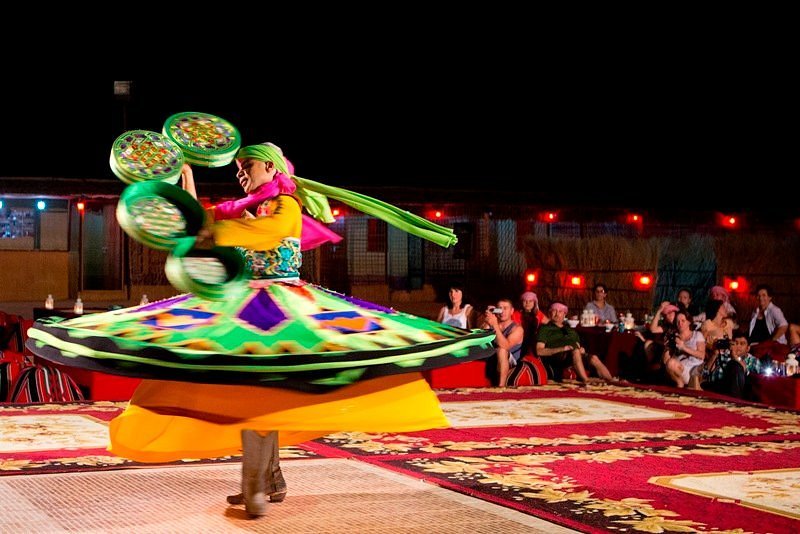In the heart of Egypt, where minarets stand out against the golden dust of the sky and where the Nile whispers its eternal prayer, the Sufi dance continues to trace its luminous circles. It is the echo of an immemorial quest: that of union with the divine, of the dissolution of the ego in perpetual motion.
Under the vaults of ancient Cairo, in the zāwiyas with walls whitened by time, dervishes still rotate, guardians of a tradition where the body becomes the vector of a breath that never dies out.
Heir of the Sama’ of Konya, the Sufi dance of Egypt is rooted in a land where civilizations have always dialogued with heaven. Introduced by the Sufi brotherhoods from Anatolia and the Maghreb, it found on the banks of the Nile a proper language: that of the Tannoura.
This term, which literally means 'skirt' in Arabic, refers both to costume and dance itself.
The word Tannoura (التنورة) comes from tanūra, 'skirt' or 'loose dress'. In Egypt, it does not only refer to the whirling clothing of dervishes, but a spiritual practice that has become a symbol of divine union.
The colorful skirts worn by the dancers represent the spheres of the universe: earth, water, fire, air and light. When the dancer turns, these circles of tissue rise and open like the rings of the cosmos, evoking the rotation of the planets around the sun.
Each color corresponds to a degree of spiritual elevation, and each turn expresses the soul’s quest towards its motionless center.
The dancer, by twirling, fades into movement: he becomes an axis, a breath, a prayer. Thus, the Tannoura is not a show, but an offering in spiral, a tribute to the hidden harmony of the world.

Over time, the Egyptian Tannoura opened up to the scene while keeping its ritual essence. The dervishes spin to the rhythm of drums and nay flutes, creating a dialogue between earth and sky.
This is not a performance but a liturgy of the movement: the dancer does not show, he disappears. In its rotation, it embodies the union between matter and spirit, between the breath of the world and the light of the Invisible.
In the alleys of old Cairo, not far from the al-Hussein mosque and the souk of Khan el-Khalili, the sounds of dhikr mingle with the rustling of the world. There, every Friday, Sufi brotherhoods perpetuate the memory of the former masters.
The drums resonate, the nay rises like a heavenly complaint, and the dancer’s skirt opens like a flower offered to the light. The circles drawn by the dervishes recall the shape of the cosmos, the spiral of time, the secret order of the universe.
The Nile, reflection of eternal movement
Like the river that crosses the country, the Sufi dance in Egypt flows, winds and renews itself. It connects the eras, unites men to the divine breath.
Each turn is an offering, each step a return to the Source. And when the music stops, there remains this silent vibration, similar to the quivering of the Nile under the moon: a reminder that everything dances, that all movement is prayer, and that the world’s spiral has neither beginning nor end.